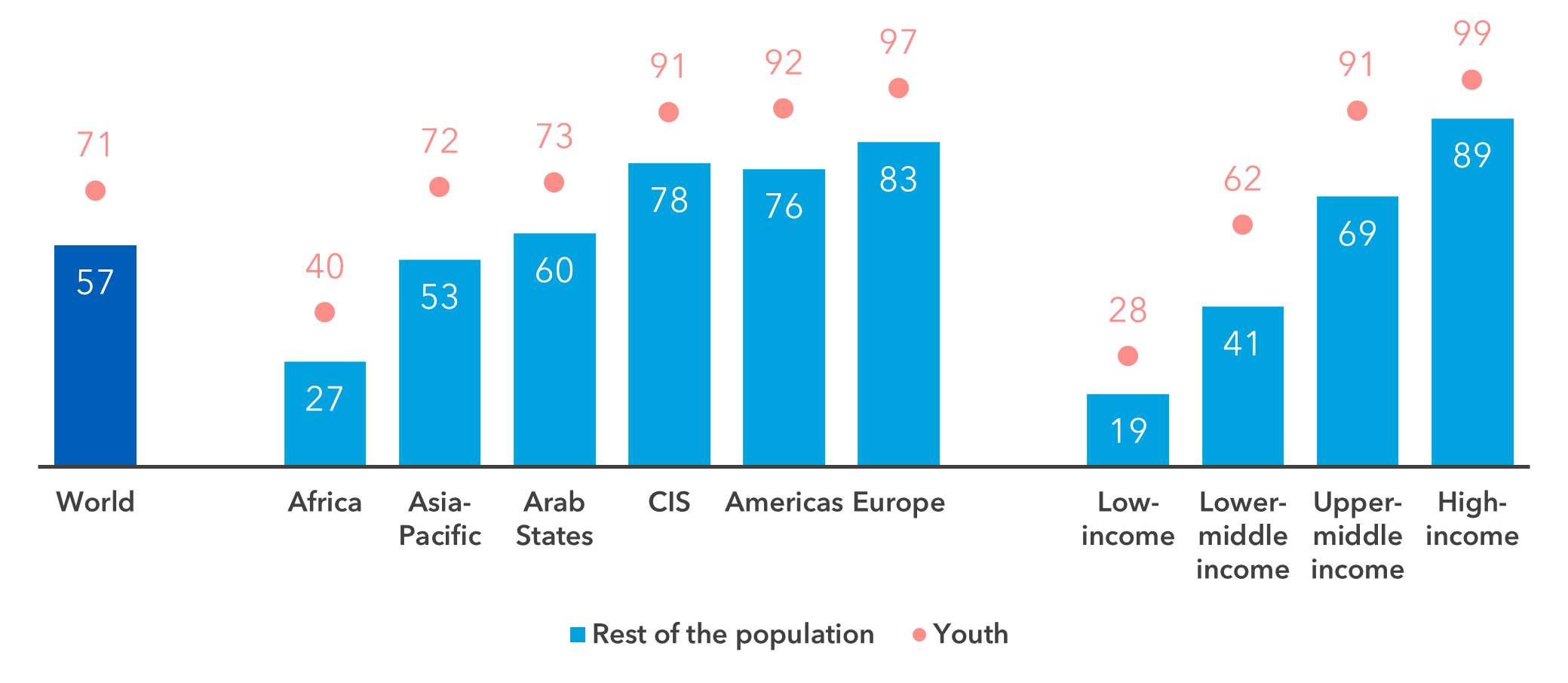Globally, 71 per cent of young people aged between 15 and 24 use the Internet, far more than any other age group, and in every country for which data are available they are more connected than the rest of the population. At the same time, only 40 per cent of school-age children have access to the Internet at home, with stark disparities across and within countries. While young people in middle-income countries drive the digital transformation, accessibility and affordability remain key constraints in low-income countries.
Youth is the most connected age group
Percentage of individuals using the Internet, 2021

Notes:
a:“Youth” means individuals 15–-24 year-olds of age individuals using the Internet as a percentage of the total population aged 15 to 24 years of age. “Rest of the populations population” means individuals below 15 years or over 24 years of age as a percentage of the respective population.
b: CIS = Commonwealth of Independent States.
Source: ITU
Access does not determine the value that children and young people gain from the Internet. A second level of the digital divide emphasizes the role of digital skills in mediating both the opportunities and risks of ICT use and digital engagement. Overall, young people have greater ICT skills than adults, and while there is gender parity for basic and intermediate skills, gender imbalances still exist for advanced skills such as programming.
Opportunities and risks tend to be correlated: more access and higher digital skill levels are associated with more exposure to online risks, making it challenging to increase the former without increasing the latter. Access and digital skills are key to ensure that children and young people enhance their prospects, however, stakeholders must collaborate effectively to protect them from online risks and harm.
As the digital environment becomes more complex, children and young people need to critically understand the digital world in which they are increasingly immersed. Many initiatives are underway to support and enhance digital learning and engagement. Online learning platforms can provide opportunities for children and young people to learn and develop new skills in many areas.
Improving evidence on access, use, skills and outcomes of children and young people will require international cooperation to ensure comparable definitions and measures and establish benchmarks enabling us to measure progress, examine problems and identify good practice.